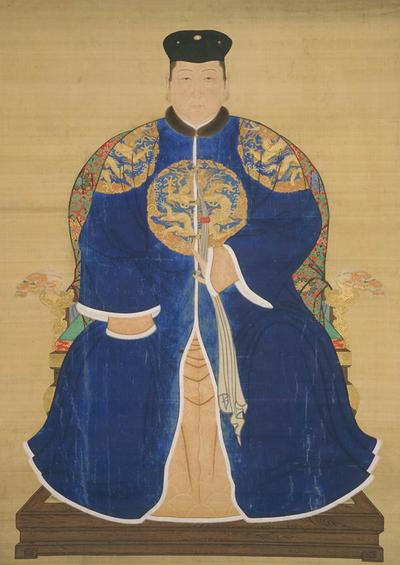
Gūwalgiya
| Name | Gūwalgiya |
| Title | Wife of Yunreng; in Qing Chronicles, named Lady Shi (Shi shi) |
| Gender | Female |
| Birthday | 1718-00-00 |
| nationality | Qing dynasty |
| Source | https://www.wikidata.org/wiki/Q51054875 |
| pptrace | View Family Tree |
| LastUpdate | 2025-10-27T03:41:12.111Z |
Introduction
Su Wangua'erjia, who lived between the 17th century and 1718, was a Manchu Bannerman of the Plain White Banner. She was the daughter of Third-Class Marquis and Commander-in-Chief Shi Wenbing, and granddaughter of the Hemou Efu and Dingnan General Shi Huashan. She was the wife of Qing Dynasty Crown Prince Yuner, and also the last officially recognized Crown Princess in Chinese history. After Yuner was deposed as Crown Prince, Wangua'erjia lost her status as Crown Princess and was referred to as the Second Brother Yuner’s Fushin (consort).
Her great-grandfather was Shi Han. After relocating to Liaodong, her family adopted the surname Shi, leading the History of Qing to refer to her as Shishi (Shi clan). Early in the Qing dynasty, she belonged to the Han military's Plain White Banner. In the 27th year of Kangxi’s reign (1688), her grandfather Shi Huashan requested a change from the Han banner to the Manchu banner. According to the genealogical records of the direct daughters of ancestors, Wangua'erjia’s family was frequently connected to the imperial family through marriage alliances. One of her biological mothers was a granddaughter of Daya’s descendant, but she was not granted a noble title; she was posthumously honored as a "Marquis" only in the 57th year of Kangxi’s reign (1718). Her biological paternal grandmother was a Princess of the Third Rank, married to her grandfather Shi Huashan, who died two years after their marriage. Her step-grandmother was a Princess of the Fifth Rank, daughter of Huo Ge, a son of Prince Suqin.
Regarding her birth date and early life, there is currently no definitive evidence. The earliest records indicate that she was granted the title of Crown Princess in June or earlier of the 34th year of Kangxi’s reign (1695), when Yuner was 22 years old. On November 11, 1697, she gave birth to Yuner’s third daughter, her only child. On September 18, 1708, Yuner was first deposed as Crown Prince, and both were confined together in Xian'an Palace. In March 1709, Yuner was reinstated as Crown Prince, and Wangua'erjia once again became Crown Princess. On November 16, 1712, her husband was deposed again from the Crown Prince position, and the couple was once more confined to Xian'an Palace.
In May 1718, Wangua'erjia fell gravely ill. The Ministry of Rites, following Emperor Kangxi’s edict, arranged her funeral accorded to the style of a "Heshuo Fushin" (a noble consort of the first rank). She passed away in July of the same year. The Ministry of Rites did not dare to request an epitaph, and Emperor Kangxi ordered scholarly officials and the Hanlin Academy to jointly compose it. In 1724, her husband Yuner died and was buried in Prince Li’s Mausoleum at Yellow Flower Mountain in Jizhou. Scholar Yang Zhen deduced that Wangua'erjia was also buried there. After Yuner's death, he was posthumously granted the title of Prince Li (Liqin Wang). Among his surviving concubines, only Li Jiashi was known to have been awarded the title of "Side Fushin" (second rank consort); whether Wangua'erjia was posthumously promoted to the rank of Princess or Prince’s Fushin remains uncertain.
Family Tree
Tap to expand more relatives